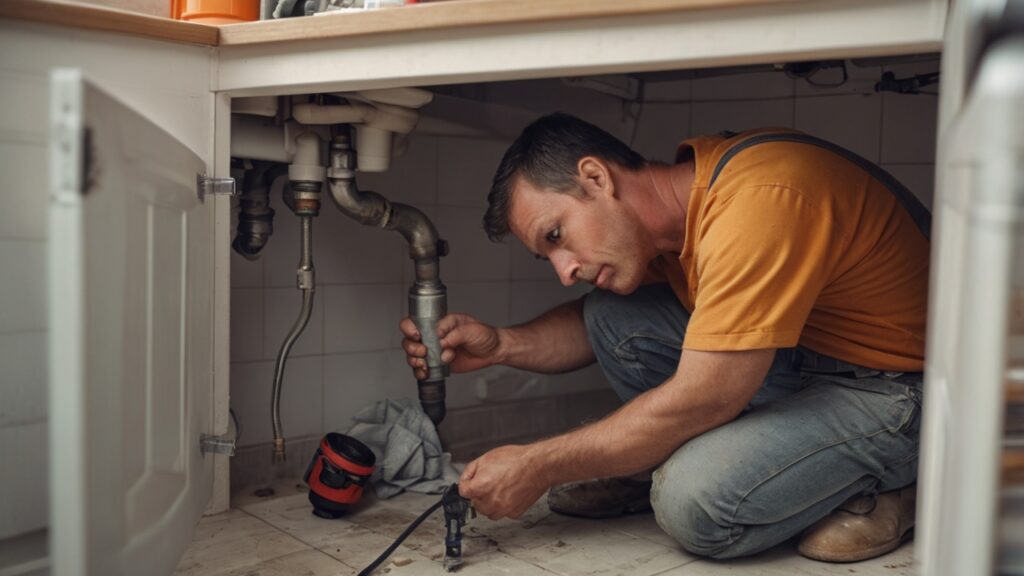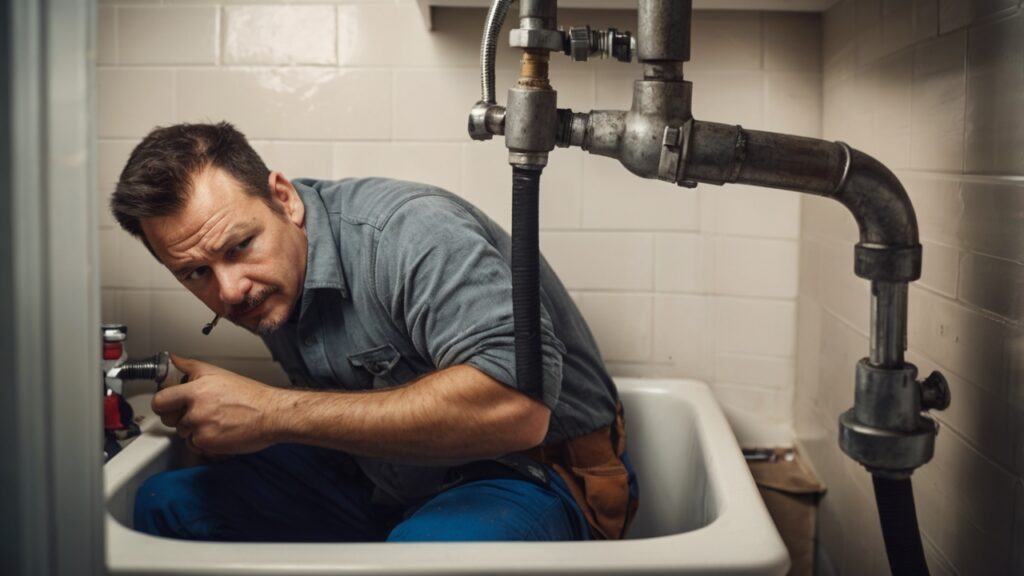Many homeowners often wonder: is DIY plumbing cheaper than a professional? At first, it feels like fixing that leaky faucet by yourself will save money, but the reality isn’t always so simple. While some small fixes might be safe and budget-friendly, other tasks carry hidden risks that could cost you thousands later. In this article, I’ll break down the true cost of plumbing mistakes, the dangers of DIY repairs, and the situations where calling a trusted plumber is not only smart but necessary.
The Everyday Dilemma Homeowners Face
It has been said countless times in homeowner circles—“DIY Plumbing vs. Hiring a Pro”—and honestly, I’ve been there too. The thought of paying $150 for a service call when the problem “looks” simple can feel frustrating. So, it’s tempting to just grab a wrench, watch a quick YouTube video, and fix it yourself.
But here’s the catch: the cost of plumbing mistakes is rarely talked about until it happens. For example, a small leak behind a wall that I thought I fixed with plumber’s tape ended up soaking into the drywall. A $10 problem quickly became a $600 repair job, not even counting the hassle of insurance paperwork. This is where the big question lies: is DIY plumbing cheaper than a professional in the long run?
The Hidden Costs of DIY Plumbing Repairs
It feels great when you manage to tighten a faucet or replace a showerhead. Those jobs are straightforward. But beyond that, the risks pile up quickly.
- Specialized Tools – Professionals arrive with pipe cutters, augers, inspection cameras, and other expensive tools. Buying them for a one-time job doesn’t make sense.
- Hidden Damage – You might fix what you see, but a professional spots what you don’t. A loose joint or corroded valve can turn into a disaster weeks later.
- Insurance Complications – Many home insurance companies won’t cover water damage if it’s proven that faulty DIY work caused the issue.
I once heard a licensed plumber in Raleigh, NC say, “Water damage is sneaky. It starts small, but by the time you notice, mold and structure damage are already underway.” This is why those “small leaks – big problems” conversations exist in the first place.
What Jobs Are Actually Safe for DIY?
Let’s be clear—DIY plumbing has its place. You don’t need to hire a professional every time a handle is loose. From experience and advice from trusted pros, here are a few tasks most homeowners can safely tackle:
- Replacing a showerhead or faucet aerator
- Tightening loose toilet seats or handles
- Unclogging a sink with a plunger (not chemicals—those can damage pipes)
- Swapping out a washing machine hose
These are simple, low-risk tasks. They don’t usually require specialized parts or in-depth knowledge of water pressure systems.
The Jobs You Should Never DIY
Here’s where people get into trouble. And I get it—it’s not always obvious when a small fix is actually a bigger problem. These are situations where you should call a licensed, reliable, expert plumber without hesitation:
- Burst Pipes – This isn’t just about shutting off the water. You need proper fittings, soldering, and possibly section replacements. (Check out Your Step-by-Step Guide to Responding to a Burst Pipe for emergency tips.)
- Sewer Line Issues – If sewage backs up, DIY is out of the question. Specialized cameras and hydro-jetting tools are required.
- Water Heater Repairs – Messing with gas lines or electric heating elements is dangerous.
- Main Line Leaks – Anything beyond the visible fixtures usually requires permits and inspections.
One plumber told me bluntly: “We spend half our time fixing DIY jobs gone wrong. The homeowner means well, but water systems are complicated.”
DIY Plumbing vs Hiring a Licensed Plumber: The Financial Math
Let’s run through a real-world example.
Scenario A: DIY Faucet Replacement
- Parts: $35
- Tools: $25 (wrench, tape, sealant)
- Time: 2–3 hours
- Mistake Risk: Moderate (cross-threading or over-tightening can cause leaks later)
Scenario B: Hiring a Pro
- Service Call: $150–$200 (including parts)
- Time: 30–60 minutes
- Mistake Risk: Almost none, plus warranty coverage
The DIY looks cheaper upfront, but if that small mistake happens, the cost of repairing drywall, repainting, or mold treatment can easily hit $500–$1000. That’s why the true cost-benefit analysis usually leans toward calling an expert, especially for anything beyond surface-level fixes.
Real-Life Case Study: The $8,000 Mistake
A neighbor of mine tried to install his own dishwasher. Everything seemed fine for a few weeks. Then one morning, they found water pooling under the hardwood floor. The leak had been dripping quietly for days. The cost to rip out the flooring, replace the subfloor, and reinstall? Over $8,000.
And the worst part? Insurance refused to cover it because it was caused by “unlicensed, improper installation.”
That single story is why many reliable contractors say: DIY plumbing is fine, but only if you know the boundaries.
Expert Opinions on DIY vs Pro Plumbing
According to James Carter, a licensed plumbing specialist with over 20 years of field experience:
“The most common call we get isn’t about something breaking naturally. It’s about fixing a repair that a homeowner tried to do themselves. People underestimate water pressure and overestimate what YouTube can teach.”
It’s not that homeowners can’t learn. It’s that plumbing involves building codes, safety regulations, and system-wide knowledge that isn’t visible from a single leaking faucet.
Beyond the Basics: Other Topics Worth Exploring
While this article focuses on DIY Plumbing vs. Hiring a Pro, there are other important aspects every homeowner should consider. For future learning, don’t miss:
- Specialized Plumbing Services Every Homeowner Should Know
- How to Find a Reliable Plumber
- Preventative plumbing checklists
- Seasonal maintenance (winterizing pipes, summer outdoor spigots)
- Water efficiency upgrades (low-flow fixtures, tankless water heaters)
These topics don’t just save money—they extend the lifespan of your plumbing system.
FAQs
1. Is DIY plumbing cheaper than a professional in the long term?
Not always. While minor jobs may save you money, the cost of plumbing mistakes often outweighs the initial savings if you misdiagnose the problem or cause damage.
2. What are the dangers of DIY plumbing repair?
Besides water damage, you could face mold growth, insurance claim denials, or even electrical hazards when working near water heaters or pumps.
3. How do I know when to call a plumber vs DIY?
A good rule: if you can see it and it only involves a surface-level part (like a faucet or showerhead), DIY might be fine. If the issue involves pipes behind walls, main lines, or anything with gas/electrical connections, hire a professional.
At the end of the day, it’s not just about saving $100. It’s about protecting your home, your wallet, and your peace of mind. Sure, changing out a showerhead yourself is satisfying, but if you’re staring at a leaking pipe under the floorboards, the smart move is clear: call a trusted, professional plumber.
For more resources, check out Recommended Plumbing Companies in North Carolina or visit Pro Service Tips.
And if you found this article useful, don’t keep it to yourself—hit the share buttons below and let your friends know the real truth about DIY plumbing vs hiring a pro.


